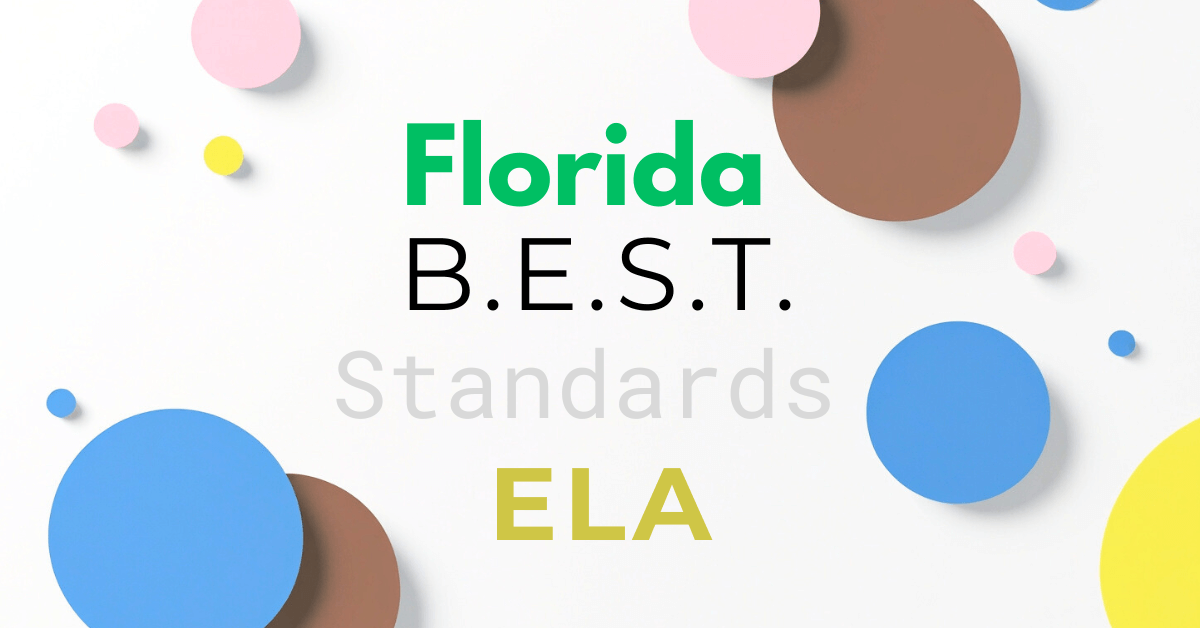If you are a Florida parent or educator, the Florida BEST Standards and Florida FAST Test are likely on your radar. But what exactly are these standards, and how do they shape your student’s education from kindergarten to high school?
What are Florida BEST Standards for ELA?
Structure and Organization of the Florida BEST Standards
The B.E.S.T. Standards for ELA are organized into 4 key strands, each with specific benchmarks that outline mastery goals by grade level, creating a clear progression of skills:
-
Foundations: Focuses on phonics, word analysis, fluency, and foundational reading skills. In early grades (K-2), this includes learning letter sounds and decoding words. For secondary students, it offers interventions to address reading gaps.
| Strand | Standard | Benchmark | Code |
|---|---|---|---|
| Foundations (F) | Learning and Applying Foundational Reading Skills | Print Concepts | F.1.1 |
| Phonological Awareness | F.1.2 | ||
| Phonics and Word Analysis | F.1.3 | ||
| Fluency | F.1.4 | ||
| Applying Foundational Reading Skills for Secondary Students Needing Reading Interventions | Phonological Awareness | F.2.1 | |
| Phonics | F.2.2 | ||
| Encoding | F.2.3 | ||
| Fluency | F.2.4 |
-
Reading: Divided into reading prose and poetry, informational text, and across genres. It emphasizes text complexity, comprehension, and analysis, like identifying themes in a novel or evaluating arguments in an article.
| Strand | Standard | Benchmark | Code |
|---|---|---|---|
| Reading (R) | Reading Prose and Poetry | Literary Elements | R.1.1 |
| Theme | R.1.2 | ||
| Perspective and Point of View | R.1.3 | ||
| Poetry | R.1.4 | ||
| Reading Informational Text | Structure | R.2.1 | |
| Central Idea | R.2.2 | ||
| Purpose and Perspective | R.2.3 | ||
| Argument | R.2.4 | ||
| Reading Across Genres | Interpreting Figurative Language | R.3.1 | |
| Paraphrasing and Summarizing | R.3.2 | ||
| Comparative Reading | R.3.3 | ||
| Understanding Rhetoric | R.3.4 |
-
Communication: Covers writing (narrative, argumentative, expository), oral communication, conventions (grammar and punctuation), research, and collaboration. Students learn to write essays, deliver presentations, and work in teams.
| Strand | Standard | Benchmark | Code |
|---|---|---|---|
| Communication (C) | Communicating Through Writing | Handwriting | C.1.1 |
| Narrative Writing | C.1.2 | ||
| Argumentative Writing | C.1.3 | ||
| Expository Writing | C.1.4 | ||
| Improving Writing | C.1.5 | ||
| Communicating Orally | Oral Presentation | C.2.1 | |
| Following Conventions | Conventions | C.3.1 | |
| Researching | Researching and Using Information | C.4.1 | |
| Creating and Collaborating | Multimedia | C.5.1 | |
| Technology in Communication | C.5.2 |
-
Vocabulary: Concentrates on academic vocabulary, morphology (word parts like prefixes), and understanding context and connotation. This helps students decipher new words and use them effectively.
| Strand | Standard | Benchmark | Code |
|---|---|---|---|
| Vocabulary (V) | Finding Meaning | Academic Vocabulary | V.1.1 |
| Morphology | V.1.2 | ||
| Context and Connotation | V.1.3 |
Florida BEST Standards Coding Scheme
Following representation shows the coding scheme for Florida’s B.E.S.T Standards

How Do Florida BEST Standards Connect to the FAST Test?
The Florida FAST Test (Florida Assessment of Student Thinking) assesses students in grades K-10 three times a year to monitor progress in ELA and Math.
-
Foundations: Early grades focus on reading fluency and phonics (e.g., decoding multisyllabic words).
-
Reading: Students analyze fiction, nonfiction, and informational texts, like comparing poems or summarizing articles.
-
Communication: Tasks include writing short responses or essays and answering questions logically.
-
Vocabulary: Questions test context clues and word meanings.
Why Do Florida BEST Standards Matter?
The B.E.S.T. Standards are more than a test prep tool—they equip students for success in school and beyond. By integrating the four strands, they foster:
-
Academic Growth: Strong reading and writing skills support all subjects.
-
Career Skills: Clear communication and critical thinking are vital for most professions.
-
Civic Engagement: Analyzing texts about history and government prepares informed citizens.
How to Support the BEST Strands at Home?
You can help your student excel in the B.E.S.T. Standards with simple, strand-focused strategies:
-
Foundations (K-2 or Struggling Readers)
Practice phonics with games like rhyming or letter hunts. For older students, use reading apps to build fluency. -
Reading (All Grades)
Read diverse texts together, from poems to news articles. Ask, “What’s the author’s purpose?” to build skills like ELA.7.R.3.2. Discuss books to spark a love for reading. -
Communication (All Grades)
Encourage writing, like journals for young kids or essays for teens. Practice presentations at home to boost oral skills (ELA.10.C.2.1). Offer feedback on clarity. -
Vocabulary (All Grades)
Play word games or explore prefixes and suffixes. When reading, guess word meanings from context (ELA.5.V.1.1). Build academic vocabulary for older students. -
Use B.E.S.T.-Aligned Tools
gatorFAST’s platform offers practice questions tailored to all four strands. -
Build Confidence
Celebrate progress in any strand to reduce test anxiety. Use positive reinforcement: “Your writing is so clear!” Try deep breathing before practice sessions.
Why Choose gatorFAST for BEST Success?
gatorFAST is your partner in mastering the B.E.S.T. Standards and FAST Test. Unlike other platforms, gatorFAST is dedicated only for Florida FAST Test Prep.
Here’s why families choose us:
-
Strand-Aligned Content: Our practice covers Foundations, Reading, Communication, and Vocabulary
-
Engaging Platform: Challenges keep students motivated across all grades.
-
Parent Support: Track progress.
-
Proven Results: Thousands of students have improved skills and confidence with gatorFAST.
Read our article Top 5 Reasons to Choose gatorFAST





